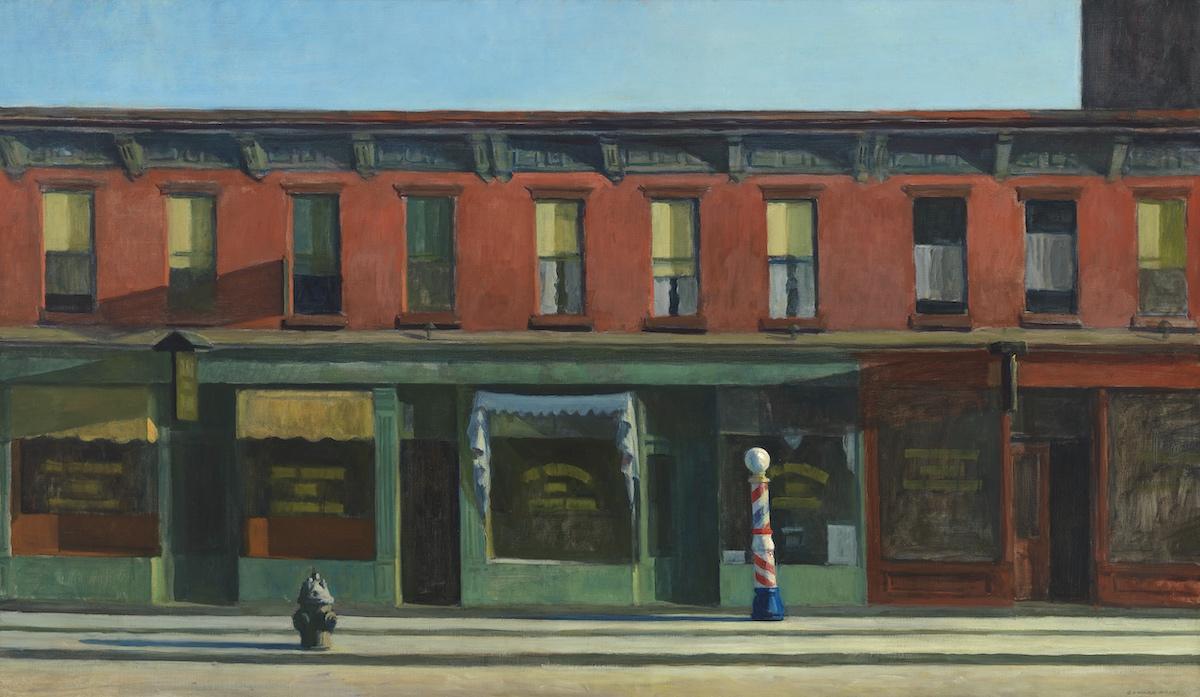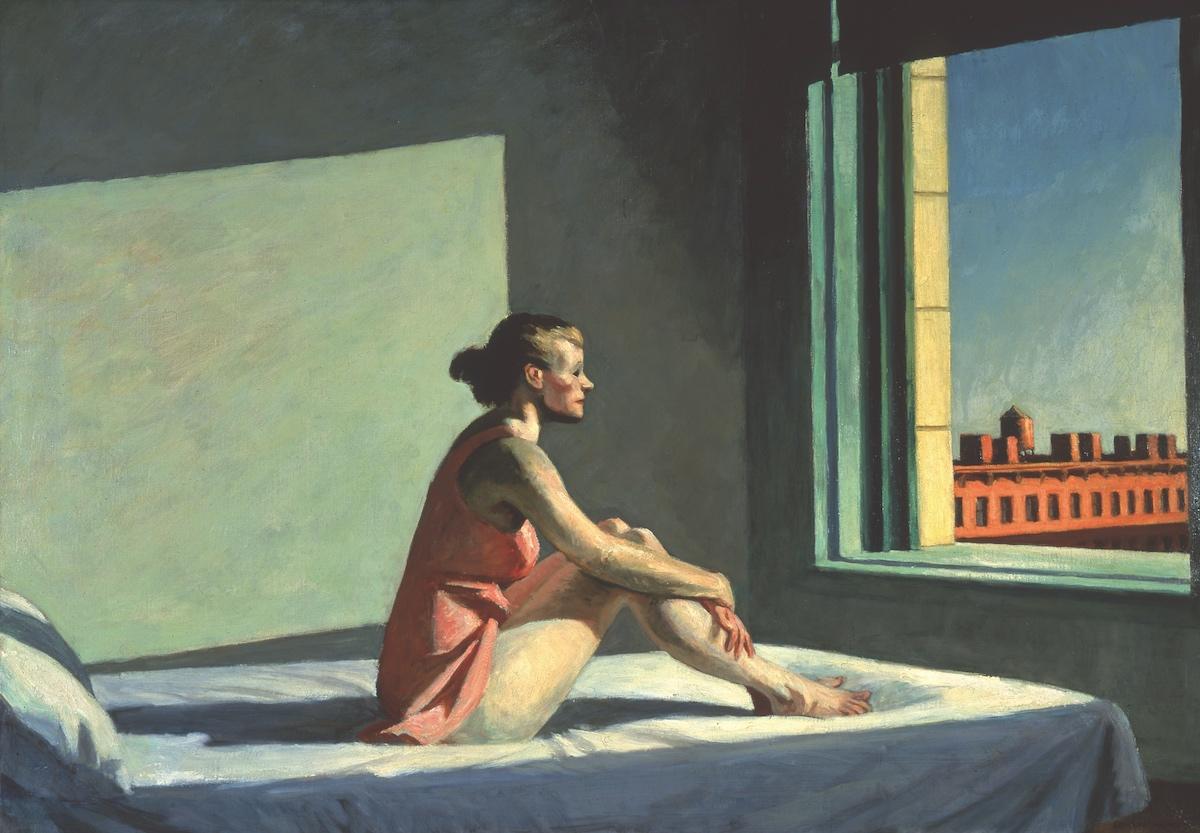Hopper was born in upstate Nyack along the Hudson River. He visited New York on family day trips as a kid and commuted there by ferry after graduating from high school to attend art classes. His teachers included William Merritt Chase, as well as Robert Henri, and one can even find traces of the former’s Impressionistic sensibility and the latter’s Ashcan School aesthetic in the young artist’s work. His studies coincided with those of fellow classmates George Bellows, Guy Pene du Bois, and Rockwell Kent, all of whom would come to shape American art during the interwar years.
Hopper relocated permanently to New York in 1908, moving five years later to an apartment on Washington Square Park where he lived and worked until his death. He made a living as a successful commercial artist, creating covers for books and magazines, which are neatly displayed in a part of the show dedicated to his graphic designs and his considerable output of etchings. The remainder of the exhibit is likewise divided into sections focusing on Hopper’s themes and motifs.






























